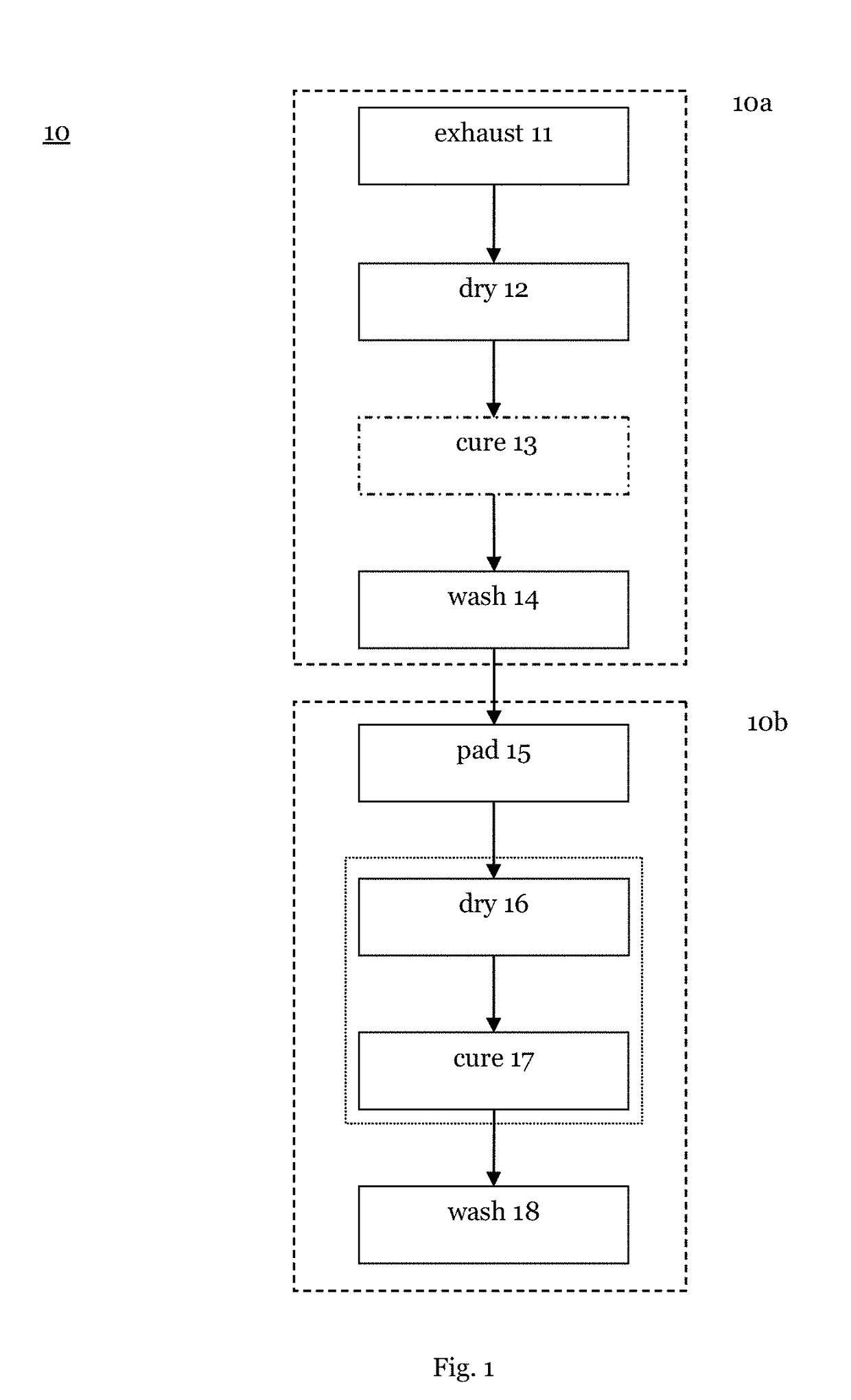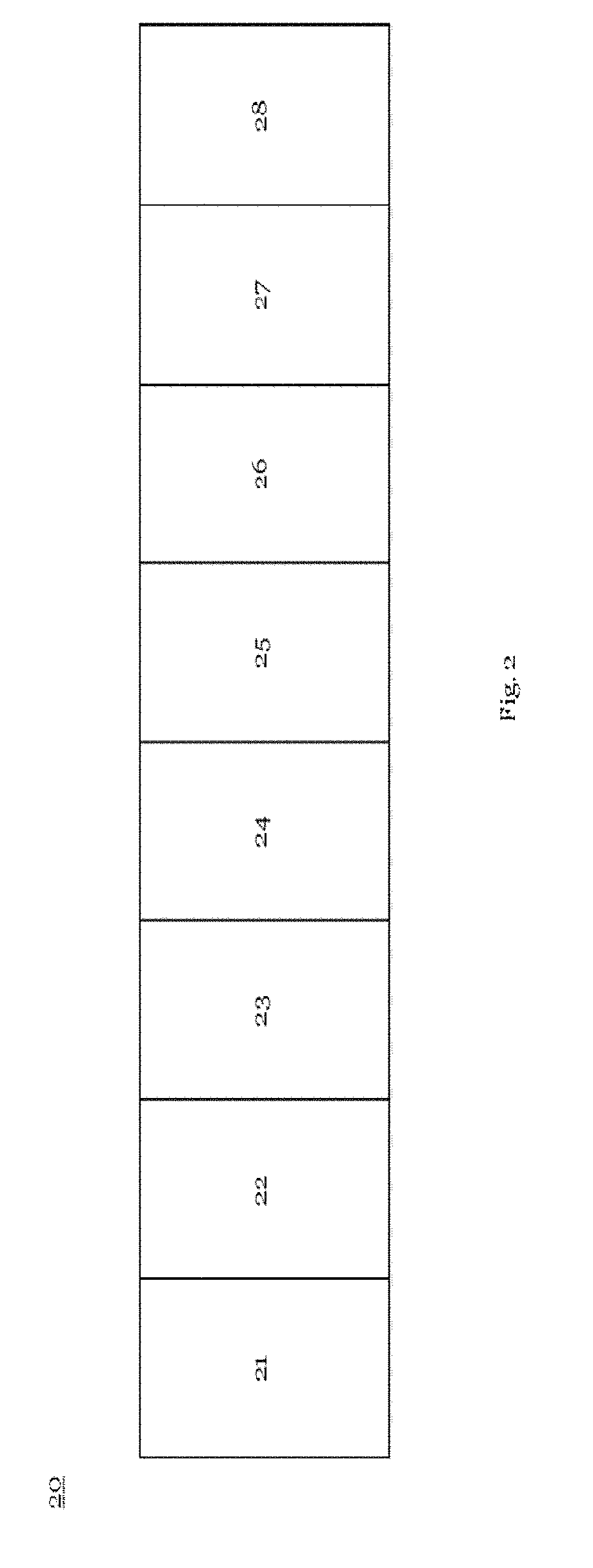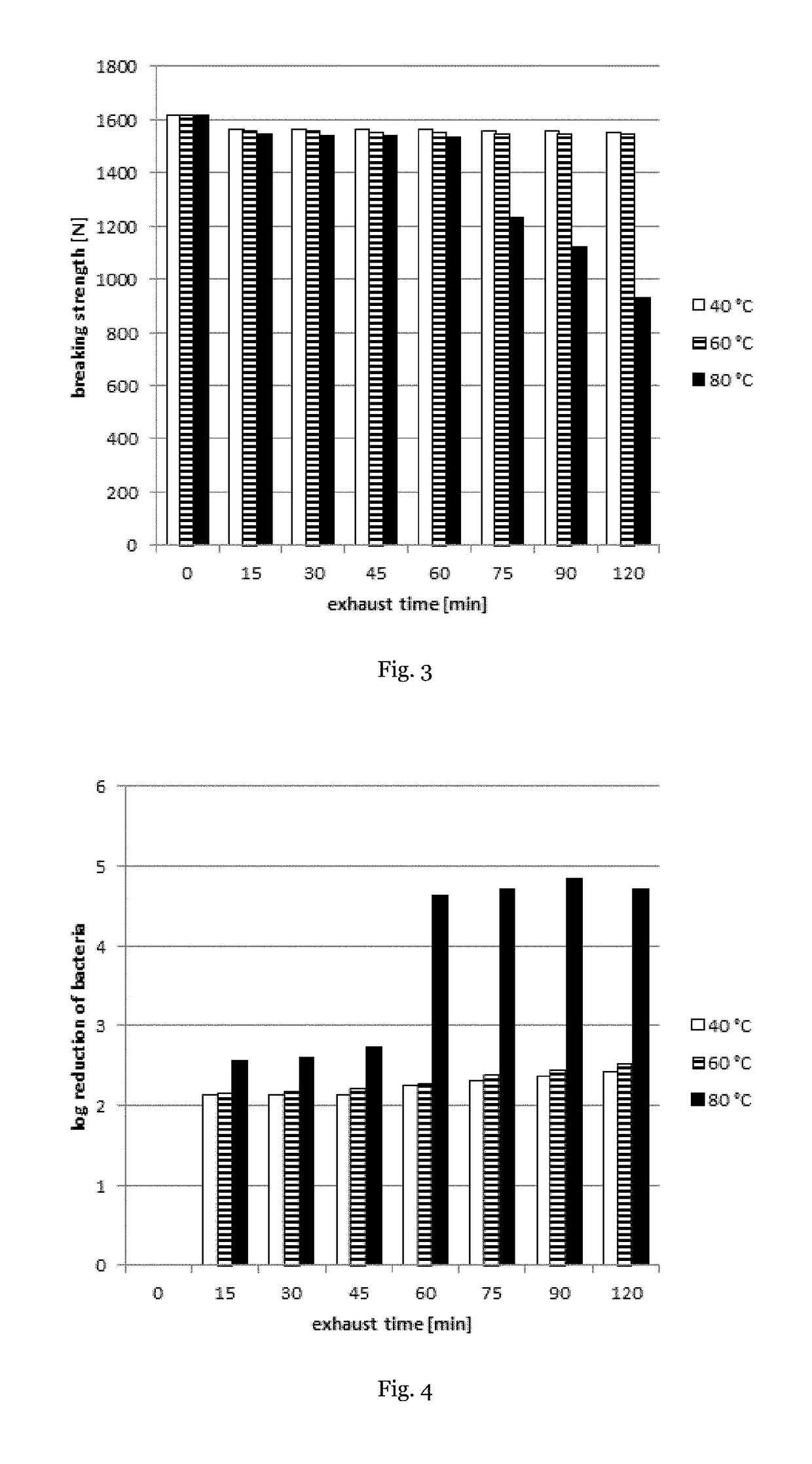Textiles having antimicrobial properties
a technology of antimicrobial properties and textiles, applied in the direction of biocide, vegetal fibres, protective garments, etc., can solve the problems inability to continue or long-lasting in nature, and re-contamination of the surface, so as to achieve effective prevention of clogging of antimicrobial filters, increase mechanical resistance, and increase the effect of filter pore siz
- Summary
- Abstract
- Description
- Claims
- Application Information
AI Technical Summary
Benefits of technology
Problems solved by technology
Method used
Image
Examples
example a
[0435]A fabric consisting of 100% cotton was chosen, with a fabric weight of 265 g / m2, and a width of 150 cm. The resulting textile material may be utilized for application in water filtration as described below, for example, and is thus termed “water filter fabric” herein.
example b
[0436]A blended fabric comprising 35% cotton and 65% polyester with a fabric weight of 200 g / m2, and a width of 150 cm was chosen. The resulting textile material may be used for the production of apparel, for example, and is thus termed “apparel fabric” herein.
[0437]The fabrics according to Example A and Example B were subjected to an exhaust process. For exposing the effect of the present invention, the exhaust process was performed at three different exhaust temperatures and at seven different exhaust times, in particular for highlighting the effect of exhaust temperature (the temperature of the exhaust liquor in the bath) and exhaust time on the antimicrobial performance and the non-leaching properties of the treated textile material. The temperatures of the liquor during the exhaust process were 40° C., 60° C., and 80° C., and the exhaust times were 15 minutes, 30 minutes, 45 minutes, 60 minutes, 75 minutes, 90 minutes and 120 minutes. The resulting textile material was dried at...
experimental examples
[0461]The present inventors performed comprehensive further experiments to determine the effect of different process parameters both for each individual antimicrobial agents and for mixtures thereof. Unless otherwise specified, cotton-polyester blend fabric (count 20 s warp and 20 s weft, construction 108×84, polyester cotton blended dyed fabric (65% polyester and 35% cotton), shade Ceil blue, width 150 cm, fabric weight 210 g / m2) was used in the experimental examples. Concentration of the chemicals are presented either in percent on weight fabric (% o.w.f.) or gpl (gram / liter), unless otherwise specified. Some of the fabrics were produced using the process described in the following, and others were produced under laboratory conditions which closely simulated this process.
[0462]The antibacterial activity of the textile was tested in accordance with AATCC Test Method 100-2012. Prior to the test, the fabric was cut into coupons of 2×4 inches and washed separately 25 times, and expose...
PUM
| Property | Measurement | Unit |
|---|---|---|
| temperature | aaaaa | aaaaa |
| temperature | aaaaa | aaaaa |
| temperature | aaaaa | aaaaa |
Abstract
Description
Claims
Application Information
 Login to View More
Login to View More - R&D
- Intellectual Property
- Life Sciences
- Materials
- Tech Scout
- Unparalleled Data Quality
- Higher Quality Content
- 60% Fewer Hallucinations
Browse by: Latest US Patents, China's latest patents, Technical Efficacy Thesaurus, Application Domain, Technology Topic, Popular Technical Reports.
© 2025 PatSnap. All rights reserved.Legal|Privacy policy|Modern Slavery Act Transparency Statement|Sitemap|About US| Contact US: help@patsnap.com



